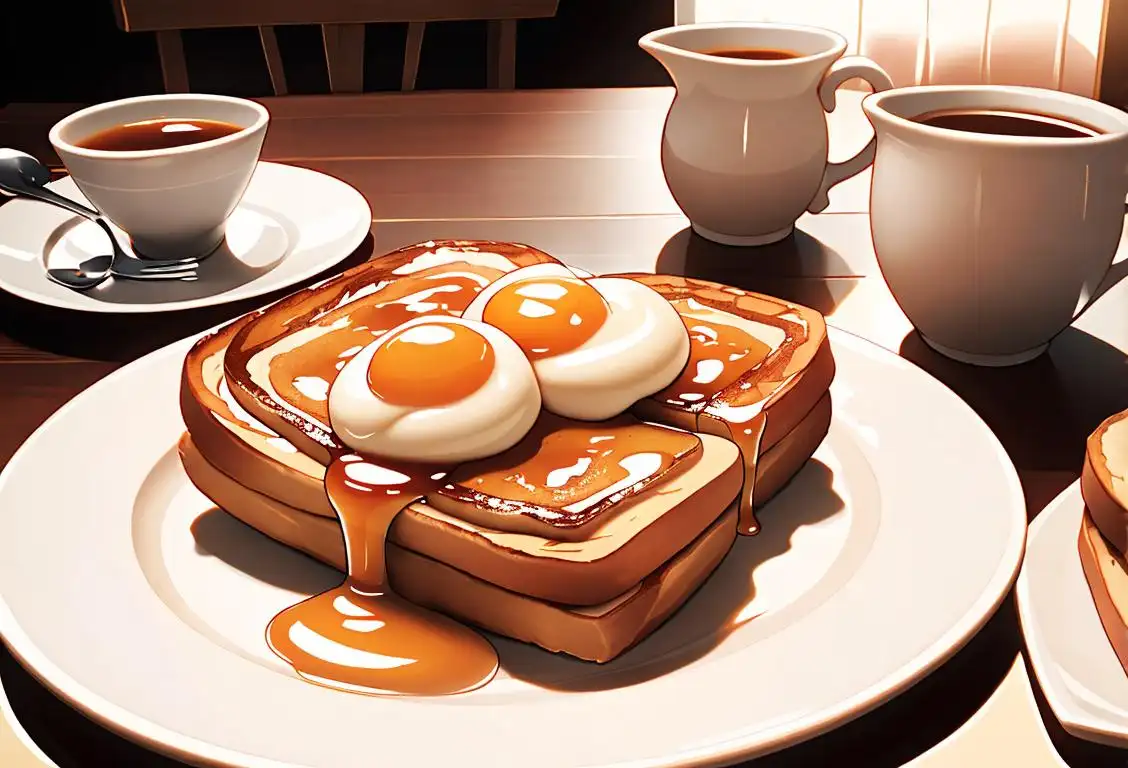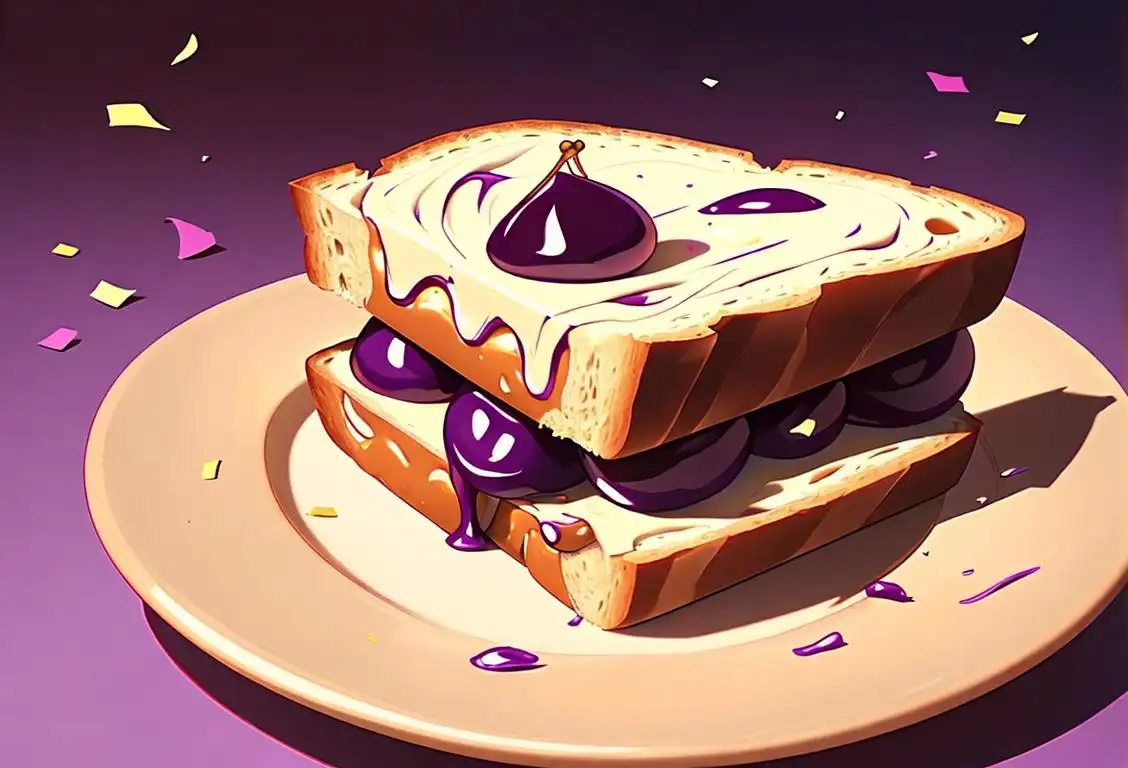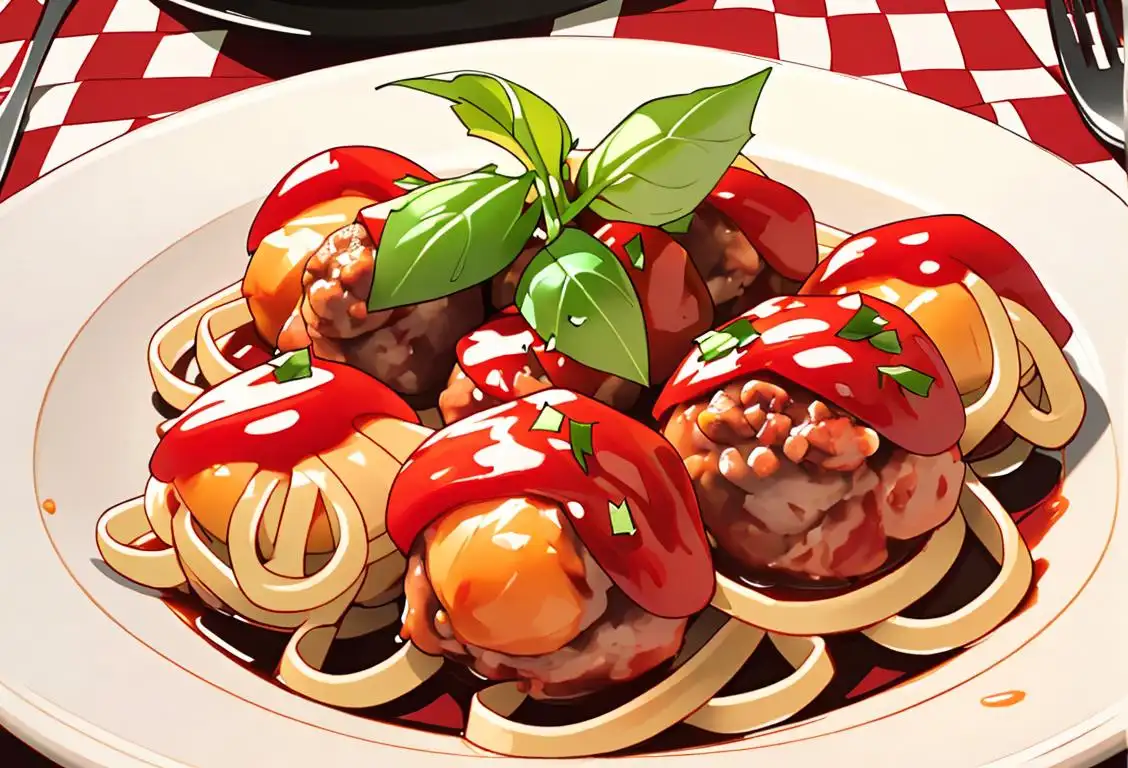National French Toast Day

Bonjour, dear breakfast lovers! Aren't you just craving some golden, crispy, and delectably syrup-drenched French toast right now? Well, you're in luck because today, we're diving deep into the scrumptiously sweet history of National French Toast Day.
When is French Toast Day?
It's national french toast day on the 28th November.
Once Upon a Time in a Toaster...
While the origins of National French Toast Day remain as elusive as the perfect brioche-to-egg batter ratio, the internet has warmly embraced this day of delicious delight. As data suggests, on November 28, 2016, French toast fervor hit its peak, with 4669 ravenous mentions online! That's a lot of love for our favorite French (or is it?) delicacy.
Lost in Translation
Despite its name, French toast isn't exactly, well, French. The concept of dipping bread in a milk or egg mixture and frying it goes as far back as the Roman Empire. It wasn't until the 17th-century English and American cooks started calling it 'French toast' (possibly because it was a way to handle stale bread like those frugal French folks).
A Toast to French Toast
National French Toast Day is more than just an online sugar rush. It's a communal celebration, where foodies unite to honor their beloved breakfast treat. Old or young, sweet toothed or savory-inclined, every plate of French toast tells a delicious story. Plus, sharing a picture of that golden stack, sprinkled with powdered sugar and glossy with syrup, is bound to earn you some serious social media brownie points.
The Future is French (Toast)
While the initial bang of National French Toast Day came in 2016, its legacy lives on. If you've got bread, eggs, and an internet connection, who's to say you can't celebrate this mouthwatering holiday every day? Just remember to make it a social affair, because much like the French, we believe that good food is better shared.
History behind the term 'French Toast'
4th century
Creation of the dish
French toast, also known as 'pain perdu' which translates to 'lost bread' in French, has its origins in the 4th century. This dish was created as a way to use up stale bread rather than letting it go to waste. The soaked and fried bread proved to be a delicious solution to repurpose old bread.
17th century
Becoming popular in Europe
During the 17th century, French toast gained popularity throughout Europe. The dish was already enjoyed in France, where it was called 'pain perdu,' but it spread to other countries as well. Each region developed its own variations, incorporating local ingredients and flavors.
18th century
French toast in America
French toast made its way to America in the 18th century. However, it wasn't commonly known as French toast at that time. It was often referred to as 'German toast' or 'Spanish toast,' depending on the region. The name 'French toast' gained widespread recognition in the United States later on.
19th century
French toast as a breakfast staple
By the 19th century, French toast had become a popular breakfast dish in America. Cookbooks of the era featured numerous recipes for French toast, often calling for ingredients like cinnamon, nutmeg, and vanilla. This sweet and indulgent version of French toast is still enjoyed today.
20th century
Variations and innovations
In the 20th century, French toast continued to evolve, with various additions and innovations. People started experimenting with different types of bread, such as challah or brioche, to enhance the flavor and texture of the dish. French toast fillings and toppings also became more diverse, ranging from fruits and syrups to savory options like bacon and cheese.
Present day
French toast worldwide
Today, French toast is enjoyed worldwide and has become a staple on breakfast and brunch menus. It's loved for its versatility and ability to cater to different tastes and dietary preferences. Whether it's served with maple syrup, powdered sugar, or a drizzle of chocolate, French toast remains a beloved and indulgent breakfast treat.
Did you know?
Did you know that French toast isn't actually French? The concept goes as far back as the Roman Empire long before it met French inclination.Tagged
awareness food fun rememberance breakfastFirst identified
1st May 2015Most mentioned on
28th November 2016Total mentions
4669Other days
French Toast Day
Fast Food Day
Cheese Lovers Day
Biscuit Day
Peanut Butter And Jelly Day
First Responders Day
Shrimp Day
Agriculture Day
Pumpkin Day
Meatball Day








